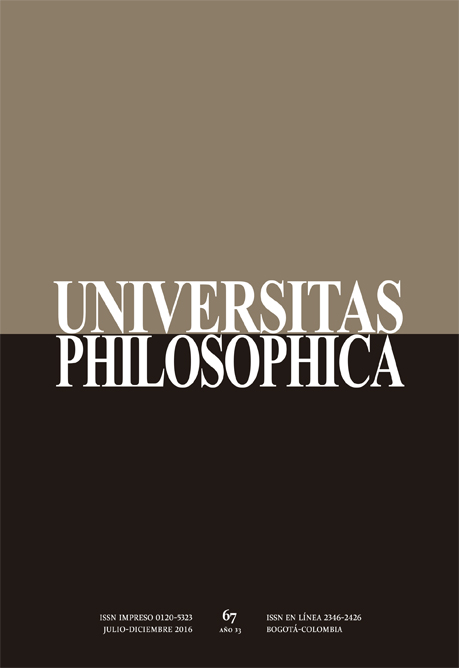Abstract
This article examines the transition that, from sense-perception (aisthesis) to the imagination (phantasía), is done in Aristotelian psychology, specifically in chapter 3 of Book III of De Anima and De Insomnis. After a first review of the use that Aristotle does of these terms (aisthesis and phantasía), and after the examination of the reasons why he ascribes the latter to the perceptive faculty of the soul, it becomes mind the enlargement of the field of perception does Stagirite to from the consideration of psychological phenomena as perceptual and postperceptual appearances, deceptions and perceptual illusions and the “propositional perception”. To end, the mediator role between perception and intellect that meets the phantasía is stressed, and distinguishes between sensory imagination, one dedicated to the combination of images and, finally, an imagination of rational and deliberative stands.
This journal is registered under a Creative Commons Attribution 4.0 International Public License. Thus, this work may be reproduced, distributed, and publicly shared in digital format, as long as the names of the authors and Pontificia Universidad Javeriana are acknowledged. Others are allowed to quote, adapt, transform, auto-archive, republish, and create based on this material, for any purpose (even commercial ones), provided the authorship is duly acknowledged, a link to the original work is provided, and it is specified if changes have been made. Pontificia Universidad Javeriana does not hold the rights of published works and the authors are solely responsible for the contents of their works; they keep the moral, intellectual, privacy, and publicity rights.
Approving the intervention of the work (review, copy-editing, translation, layout) and the following outreach, are granted through an use license and not through an assignment of rights. This means the journal and Pontificia Universidad Javeriana cannot be held responsible for any ethical malpractice by the authors. As a consequence of the protection granted by the use license, the journal is not required to publish recantations or modify information already published, unless the errata stems from the editorial management process. Publishing contents in this journal does not generate royalties for contributors.


